“The moment you lose the anchor in the case, any one word will lead anywhere.” – Rajan Sankaran
A contemporary approach in homoeopathy, termed Synergy, has evolved over the last thirty years and has come to be advantageous when utilized in homoeopathic practice. While utilizing the fundamental and traditional tools of homoeopathy like the Materia Medica, Repertory, and the Organon, the Synergy method also encompasses the newer approaches like Sensation, Kingdom, Miasm and Source understanding.
This is a system that is unique. Its design can be taught, practiced, and replicated successfully by students and practitioners. This method has brought together both the old and the new approaches in homoeopathy. It has established a universal platform where all approaches in homoeopathy are welcomed and used to aid in the patient’s recovery.
This triangle figure represents the Synergy concept in homoeopathy.
At the peak of the triangle is the Genius. The ‘Genius’, as coined by Dr. C.M. Boger, pertains to the prevailing spirit or distinctive character of something – this applies to the patient and also to the remedy. In his foreword to his Synoptic Key he states –“The strain which runs through every pathogenetic symptom complex has been called the genius of the drug.” The first few lines about each remedy in Boger’s Synoptic Key usually give a very good idea of the remedy’s genius. This general quality of the patient and of the remedy has also been called, by various authors in homoeopathy, the essence, keynote, soul, red line, or the grand generals.
The sides of the triangle, Symptom and System, complement each other. When they are used together the best results ensue. Symptom includes the use of rubrics, structured repertorization, keynotes, provings, characteristics, and clinical symptoms. The System includes the understanding of kingdom, sensation and miasm.
When the System areas are used synergistically and in unison with traditional methods of analysis, the view of the case and of the remedy is widened. This allows for the greatest understanding of what is to be cured in disease, and what is curative in a remedy.
A very useful tool utilized alongside the Synergy Triangle is the Anchor. It emphasizes the application of complete symptoms (location, sensation, modality, concomitant) along with the very characteristic, sure symptoms to create a reliable repertorization graph, which is free of interpretation or bias.
When utilizing the idea of “Synergy”, all three sides of the triangle (Genius, Symptom and System) plus the use of the Anchor tool, must be included in the prescription, and ultimately each one will reach the same conclusion about the remedy that matches the patient.
We will now examine each point of the Synergy Triangle and other additional tools.
GENIUS
The Genius of the patient and of the remedy must match.
Some examples:
– Baryta carbonicum – slow development, torpid, dwarfish, early senility, scrofulous, vascular softening, takes cold easily, slow, inept and backward
– Stannum – extreme weakness, paralytic heaviness, profuse mucus secretions
– Cuprum – intermittency, spasms, cramps, jerking, violence, nerves affected
– Ignatia – erratic, spasmodic effects, twitchings, jerks, hysteria, over sensitiveness.
– Helleborus – dark, dusky remedy, dark face, sooty nostrils, dark lips, hands etc.
– Plumbum – slow, insidious processes, having violent side symptoms, often of a very changeable or incoherent character, coming in single parts
– Stramonium – remedy of terrors but lacking in pain, with suppressed excretions, passing neither urine nor stool, dreads darkness, horror of glistening objects, fearful, desires company or escape
SYSTEM
The System view can lead to Kingdom, Sensation, Miasm, or Source.
SYMPTOM
When talking about the Symptom point of the triangle, Rubrics and Structured Repertorization, Materia Medica, Keynotes, Provings, Characteristics, and Clinical Symptoms are critical to the understanding.
THE ANCHOR
The Anchor is the first, clear, sure, definite, concrete thing we see in the case. The primary characteristic of the anchor is that it must be clear and sure. Even more central to this is the degree to which this symptom is unconditional in the patient – the more individual it is, the more dependable it gets. So an Anchor is a solid and dependable characteristic that is not obtained through interpretation. The anchor can come from any aspect of the case, as illustrated below:
When trying to understand a patient there must be a solid grasp of the area that is most obvious in that case. In one case there could be definitive symptoms and rubrics. In another there can be a very clear view afforded by the System. This is where case-taking becomes flexible and artistic, where one can choose the area that is most strikingly accessible. However, no matter which area the case starts in, the other areas must follow closely behind (Genius, Symptoms or System) and finally converge in one and the same remedy.
Case Example
(This case is previously published in ‘The Synergy in Homoeopathy: An Integrated Approach to Case-taking and Analysis’ by Dr. Rajan Sankaran)
A case of fibromyalgia
(Note: D: Doctor, P: Patient, Italics: Consultants commentary, Bold: Pertinent portions in the case, HG: Hand Gestures)
A male patient of 42 years comes with fibromyalgia (Homeopathy Treatment for Fibromyalgia). He has recurrent cold and cough for which he takes antibiotics. Occasionally with this condition he also has breathlessness. He has been operated for sinusitis. His blood tests reveal deficiency of vitamin B and vitamin D.
P: My feet are not able to take my weight. I have disturbed sleep; I am tired throughout the day and feel very sleepy. I am head of marketing and since the last year or two I feel a loss of confidence in myself. I feel breathless and I need to take rest. I am also losing hair for the past fifteen to seventeen years. I have dandruff which may be psoriasis.
I have two kids. If I carry my younger daughter, I feel I will drop her; I cannot hold her properly. I used to be very short tempered and now I am too irritable. I shake when angry; I feel I will fall down. There is a constant burning in my eyes even after a good sleep. I have cramps in my legs which are very evident when going to bed – my legs pain a lot. There is pain with tiredness and I get tired very easily. Now even while talking I am feeling tired and breathless.
Each part of my body is shrinking; my bones are shrinking; my entire body is shrinking.
D: What is the effect of all these problems on you?
P: Professionally, I am not able to concentrate on my job. I look after brand advertisement that involves communication and thinking. I feel breathless during presentations and while talking. My speech doesn’t flow naturally. My last presentation was the worst as I was unable to talk even for five minutes. This makes me feel very guilty. I felt everybody was looking at me, and felt that they might think what a joker I am. They will feel I am not capable of my job. I just want to vanish and not be visible to anyone.
D: What was your experience in that?
P: I was shaking; I wanted someone to take me out physically. I was psychologically broken for five to ten minutes; I was not able to speak; I lost the confidence. I felt, ‘what a fool I am’, but nobody raised the question. I was just not able to look in a mirror, not able to convince myself that I would be good. The frequency of being in front of a crowd has increased now. I feel discomfort when talking, feel I need to have proper oxygen. Initially when I started to talk to you I was feeling breathless but now I am now a little more relaxed.
D: Tell more about this experience?
P: I need a deep breath when talking. It’s more when starting to talk, or the initial part of a presentation, and better after fifteen to twenty minutes. I feel dryness in the mouth. I spit while I am talking. What will others be thinking about me during the presentation? Everyone will be laughing, wondering whether or not I am capable of taking the responsibility. You need to take a deep breath.
D: What else?
P: My voice gets affected; I am not comfortable; I lose control of my speech; my words are not proper. When this happens you feel you have not done well; I feel uncertain about my future, hopeless. There is always this fear of failure constantly in my mind, that I may have to give up [my job] due to my health. What will happen to my family, my future, myself in life? I believe I am very intelligent. I feel I am towards an extreme point, hopeless.
In 1993 I suffered from typhoid. There was restriction in food. I liked only bread with tomato slices. After this episode I started feeling weakness and abdominal pain. I felt a lump in the right side of the abdomen after eating until I passed stools – this was every day.
This led to an experience with very bad stomach pain. Subsequently I underwent an operation for intussusception. The pain was very severe. It was acute, on the right side of the abdomen. It was like spasm, a cramp like colic. I could not lie down during the pains; I had to sit in a bent forward position and apply slight pressure.
Then I underwent diagnostic surgery, but no diagnosis could be made and they removed the appendix. Surgery couldn’t find out anything, the pain persisted and I took ayurvedic treatment. With that my motions were very clear as compared to earlier – they had been hard, tight stools – but there was no regularity regarding stools.
The pain started with the gastric problem, when I would feel a lump after my first meal, which increased in size, and then after lunch the pain would go up. The pain intensity would be the same but more after lunch, after eating.
D: Describe the pain. How would it start?
P: The pain increased gradually and it would slowly decrease. With it I was very restless. If I was sitting I had to stand; if I was standing I felt I had to lie down; I felt the need to do something to relax. There was a lot of bloating of the stomach; the gas formation used to increase in the day. The right side of the abdomen was more distended, especially after eating. I felt slightly better by pressing on the abdomen – the pain in the lump would be relieved a little. There was no gas coming out. If I had been able to pass gas it would have felt better.
D: What dreams you get?
P: I don’t get dreams. My sleep is disturbed sleep. Since the last six to twelve months my energy is very low and I always feel very sleepy. If you tell me to sleep I will go to sleep. There are no positive dreams, mostly negative. There is a dream of losing my parents.
I am father of two daughters. I lost a baby boy. During my wife’s delivery there was some complication and the child couldn’t survive. Even before losing my child, I dreamt of carrying his body.
I need to concentrate. Every job needs concentration – you have to be innovative; you are taking care of all-India marketing. Since the last six months I am feeling low, not healthy, weak and tired throughout the day. Since I have to go to work I am going, but I don’t feel like going. I feel sleepy and tired. I am working because I am supposed to. I feel like going away, taking a break and take proper rest and sleep. I feel tired, sleepy, no desire to work. Out of tiredness I have taken a couple of wrong decisions. I have almost resigned three times in six to eight months. There is no pressure from my job; everyone is happy with my work, but out of frustration I get restless and irritable.
With regards to clothes he says, “Fitted clothes give me confidence. If they are loose feel I am shrinking.”
D: Tell about shrinking?
P: Shrinking means reducing, decreasing, loosening, losing shape. If I am losing something, like losing vitamins in my body, or if my feet become flat, then I feel that what was there in my body is not there in me now.
D: Tell a little more about losing?
P: Losing is like a particular element or a thing that was within me, I don’t have now.
D: You said something about innovation – tell more about that?
P: For any product to be launched you need innovation. It’s a new experience in life for anybody. It’s like something which is nonexistent in the world and has come up. You need to be very well versed. There are certain qualities needed: to be fresh; thoughtful about the thing to be newly launched; well versed with the requirement of the customers.
D: What are your interest and hobbies?
P: I love cars and driving; I like gardening; I like horses, dogs and animals. I like their honesty, not hurting anybody. Horses give me a feeling of peace. Dogs have patience. I like gardening, like greenery and flowers. I want to have my own farm and garden.
D: How is your reaction to strong smells?
P: I don’t like them – they disturb me, cause sinusitis.
Understanding and analysis: I try to understand the nature of the problem. My understanding of how to see the main issue has changed in the last year. I now see the main issue in the case as what Boger calls the “genius of the remedy”, or what Boenninghausen and Phatak call the essence of the remedy or of the patient. It is slightly different from what Dr. George Vithoulkas has to say about “essences”, regarding the mental or psychological aspect. Rather it is a general approach which asks, ‘what is the exact issue in the case, the nature of the pathology?’ I think this first needs to match between the remedy and the patient. Then we look at the themes of the case. This has changed my approach and has helped me a lot.
Thus I first consider, what is the nature of pathology? He says, “I have lot of body ache; it pains a lot; I cannot stand; I am always tired; losing confidence; losing control; I am going to fall down; as if I can’t hold my daughter; so tired; as if I am shrinking. So the nature of the pathology is fatigue – tiredness and weakness, as if his muscles, his bones, his brain and everything have become tired and weak and have lost their capability. This is the general idea of the entire case, what Boger calls the genius of the remedy or of the patient.
So in Materia Medica I want to find a remedy that has at its very centre, at its very core, in its very essence, this fatigue and tiredness, weakness, falling and exhaustion. This is what I am thinking now-a-days. Life becomes easy when you see that there are a very few remedies with this kind of extreme fatigue and weakness. Then we have to see that the themes of one of those remedies matches the themes of the patient, and when we get it, it is just like the sound of two hands clapping. On the one side you have: I cannot concentrate; I cannot work; I cannot innovate; I cannot communicate; my confidence is very low; I have no ability and it is affecting my career, so you know that we are talking about the Mineral Kingdom. He is losing his capacity to innovate and to communicate, and he is losing control of his voice. He has a lot to do with his voice: he gets tried when he speaks; he trembles on speaking; the voice doesn’t come out when he is speaking. When you put these together you get Stannum metallicum. In Stannum, the first modality given by Phatak is “Worse using voice”, and you know very well that Stannum is in the Fifth Row of the Periodic Table, which has lot to do with creativity, communication, performance, speaking. And his main feeling is that he has lost it, that he is a failure, wants to resign, wants to give up. He has lost the capability to do things, to be creative, and that comes in Stannum metallicum.
Also in mind symptoms we have, ‘Very sensitive as to what others say about her’, and this is what he worries about in his work meetings. In Materia Medica, Stannum reads as follows:
- Anxious, nervous, sad…Miserable and discouraged.
- Cannot get rid of an idea once fixed in her mind.
- Taciturn and dislike of society.
- Sudden fits of passion.
So we see a lot of hopelessness and depression in Stannum, and when these symptoms plus the system themes come together with the genius of the remedy, then there is a clap.
In the generalities of Stannum we find: “The chief action of Tin is centred upon the Nervous System, causing Extreme Weakness which is esp. felt in Chest; throat; stomach; upper arms and thighs; the patient is unable even to talk; drops into a chair instead of sitting down; trembles on moving. Weakness is felt much more on going down stairs than going up. Paralytic heaviness or a weakness.” (Phatak)
If the patient says, “If I have climbed a staircase I feel as if I have run a marathon, that kind of exhaustion and weakness I feel in my legs”, that is the sensation.
This weakness is nervous weakness, therefore any anxiety makes it worse. And you also know the main symptoms of Stannum, “PAINS INCREASE GRADUALLY AND GRADUALLY SUBSIDE” (Boger).
With all of this he says the only past complaint which he had was abdominal pain for five years. On examining this area we see that Stannum has the symptoms:
| Fatigue, Weakness, Tiredness, Falling, Nervous, weakness.[1] |
| SYMPTOM | SYSTEM |
| Pain, pressure amel.Pain, bent, bending double amel.
Pain, eating agg., after
PAINS INCREASE GRADUALLY AND GRADUALLY SUBSIDE.
Pain, night, restlessness with Abdomen, distension, sides, right
Flatulence, pressing on abdomen amel.
Voice agg
Despair, exhaustion, from
Dreams, misfortune, of
Exhaustion, mental prostration, talking, from
Exhaustion, mental prostration, trembling, with |
Losing confidence; losing the capability to innovate, communicate, perform Issues of Fifth Row of the Periodic Table, which has a lot to do with creativity, communication, performance, speaking.
He lies in the right side of the 5th row and the feeling is that he has lost it, that he is a failure, wants to resign, wants to give up. He has lost the capability to do things, to be creative, and that comes in Stannum metallicum. |
In the foreword to his Synoptic Key Boger writes: “The strain which runs through every pathogenetic symptom complex has been called the “genius” of the drug. To give this its proper place in the prescription should be the ideal of every prescriber. To this end is this book written.”
If this strain, running through all of the pathogenetic symptoms of the patient and remedy, the genius, is given its proper place, it will help you a great deal in prescribing, and if it is missing, there will be a failure. This understanding of the genius has made my comprehension quicker. The genius is an anchor in the case. I must have in my case the central core of the remedy; the genius must be equally prominent in both patient and remedy. This means I should match the centre of remedy with the centre of patient. If it is weakness, fatigue, inability, tiredness, exhaustion, then it should be there. Along with rubrics and Sensation this makes it quick to come to a remedy. This is the reason that these days my case-taking doesn’t take a long time – not more than thirty to forty-five minutes. It has made me surer; my confidence level has increased to where I very often say to the patient, “You will be alright”.
So the patient was given Stannum metallicum 1M
Discussion: In this case if we had asked the patient to go on and on with the word ‘shrinking’, we might have landed with some Cactus family remedy. The most important part is the anchor. The moment you lose the anchor in the case, any one word will lead anywhere. The anchor helps you not be misled by one word. Then when we hear ‘shrinking’ we do not directly jump to Cactaceae. This is the main problem with the Sensation Method. In this case when we ask about shrinking, he talks about losing, and we again get Mineral qualities, and not the Cactus family gesture of shrinking and expanding. But our mind is so programmed that the moment we hear such a word we can jump to a conclusion, and this can be avoided by the use of the anchor – by anchoring to the genius of the patient.
In the first ten minutes of the case I am listening for the common pattern in his complaints – what is the general idea of this patient? In this case it is FATIGUE. That is the core, the anchor, and whatever else comes is all around that.
We have to match the intensity of symptoms of the patient with the intensity of the remedy. Here I am talking about the remedy itself, and not the Repertory.
We have to think in parallel. The Sensation Approach is not exclusive but inclusive. When we are looking at the remedy we have to look from all the sides: toxicological symptoms, Repertory, Materia Medica, keynotes, Kingdoms and Miasms.
Follow up after 15 months of treatment:
The patient has received few doses of Stannum met 1M, and after 15 months of treatment he is almost 50% better in his overall health. His ankle pains are better by 50%. Overall pains are better by 50%. His weakness is reduced by 70%. He is less tired and exhausted while talking.
His throat complains are better, and sinus has improved. There have been no episodes of upper respiratory tract infection nor has he taken any course of antibiotics since he started Homoeopathy.
He has started walking and yoga every day, and has also gained weight.
His sleep has improved and his dreams are much positive now.
He had to visit Cape Town during the colder climate and was able to withstand the low temperature. The exhaustion which he would suffer in the past from exertion is much less now.
He is much more confident, less restless and more patient.
He has not only experienced good health, but his experience with Homoeopathy has made him a patron of Homoeopathy. He now calls himself a ‘brand ambassador of Homoeopathy’, and promotes it everywhere.
Conclusion: In my understanding this is an era of integration. One has to be open and flexible to use the approach best suited for the patient. Let the patient decide. And you simply facilitate the process. My experience of integrating the old and new– the System and Symptom is yielding much better results in my practice than ever before. The System will give you the crux and the Symptom(s) will give you the hard facts, the inarguable data.
The Synergy approach to homeopathic case-taking provides a much needed integration and unification between the old schools of thought and the new. The advantages of this approach are that it is highly reproducible and provides homeopaths with a newfound confidence in their clinical practice.
[1] This example is given with the rider that this is definitely not complete but given as pointer to direction of genius of the remedy and one needs to flesh out the genius of the remedy through the reference to standard book.

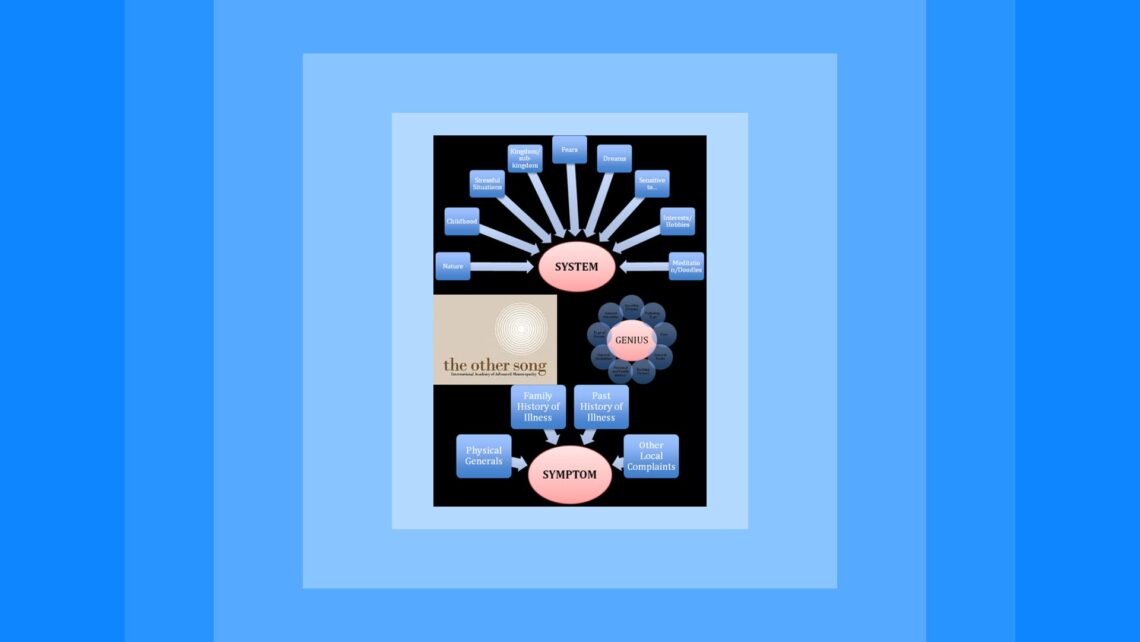

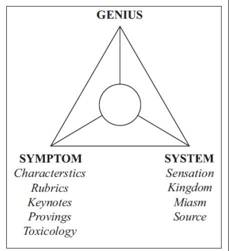


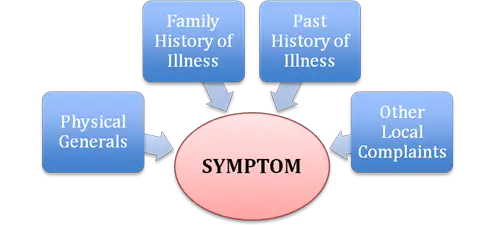
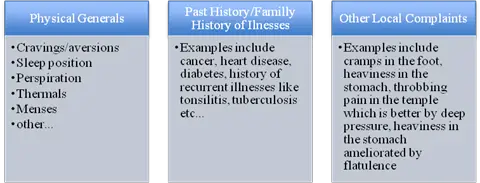
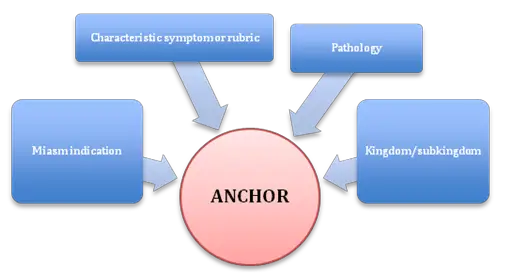
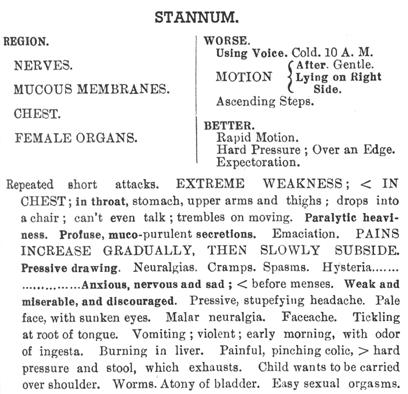
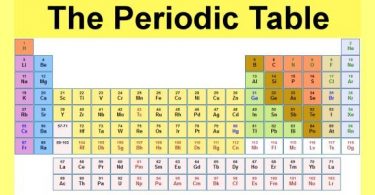
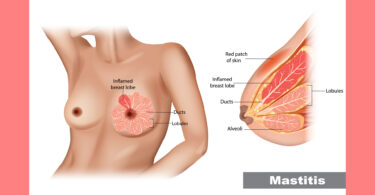
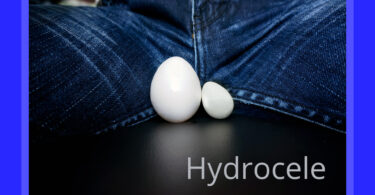
This article gives a clear idea what this new approach stands for, and an insight of all the knowledge which is needed for its use. The graphics are instructive and extremely helpful.
I was quite overwhelmed. “And all of that is necessary to find a correct remedy?” All the classing, analysing, probing into the persons personal sphere?
Anyway, I continued reading and came to the case example.
Case Example
(This case is previously published in ‘The Synergy in Homoeopathy: An Integrated Approach to Case-taking and Analysis’ by Dr. Rajan Sankaran)
A case of fibromyalgia
(Note: D: Doctor, P: Patient, Italics: Consultants commentary, Bold: Pertinent portions in the case, HG: Hand Gestures)
A male patient of 42 years comes with fibromyalgia. He has recurrent cold and cough for which he takes antibiotics. Occasionally with this condition he also has breathlessness. He has been operated for sinusitis. His blood tests reveal deficiency of vitamin B and vitamin D.
P: My feet are not able to take my weight. I have disturbed sleep; I am tired throughout the day and feel very sleepy. I am head of marketing and since the last year or two I feel a loss of confidence in myself. I feel breathless and I need to take rest. I am also losing hair for the past fifteen to seventeen years. I have dandruff which may be psoriasis.
I have two kids. If I carry my younger daughter, I feel I will drop her; I cannot hold her properly. I used to be very short tempered and now I am too irritable. I shake when angry; I feel I will fall down. There is a constant burning in my eyes even after a good sleep. I have cramps in my legs which are very evident when going to bed – my legs pain a lot. There is pain with tiredness and I get tired very easily. Now even while talking I am feeling tired and breathless.
Each part of my body is shrinking; my bones are shrinking; my entire body is shrinking.
At this point it was clear to me: Stannum! (that was less than 5 minutes reading)
And to test my knowledge I compared each symptom:
I took the start of the case notes and compared them with:
Boenninghausen characteristics
Boenninghausen TT (the number in the bracket refers to the grade)
Jahr AZ 1848
Case:
My feet are not able to take my weight. Great weakness in thighs. Feet, (4, TT)
I have disturbed sleep; Nightly restlessness, sleep disturbed (4, TT)
I am tired throughout the day and feel very sleepy. Day sleepiness ,sleepiness during day (2TT),
I am head of marketing and since the last year or two I feel a loss of confidence in myself. Despondency, hopelessness (3, TT)
I feel breathless and I need to take rest.Want of breath from every movement. Breathless (4, TT) rest (2,tt)
I am also losing hair for the past fifteen to seventeen years. I have dandruff which may be psoriasis. ( = both signs of latent psora.)
I have two kids. If I carry my younger daughter, I feel I will drop her; I cannot hold her properly. Paralytic heaviness in extremities. Paralysis of arms and legs. Can’t hold (3, TT)
I used to be very short tempered and now I am too irritable. Quickly passing ebullitions of anger. Irritability( 2, TT)
I shake when angry; Extraordinary restlessness and anxiety. Anger< (2 TT) shaking, (3, TT)
I feel I will fall down. Weakness (5, TT)
There is a constant burning in my eyes even after a good sleep. Burning in the eyes. After sleep( 4, TT) eyes, (4TT) burning (5, TT) legs (3, TT)
I have cramps in my legs which are very evident when going to bed – my legs pain a lot. Cramps, cramps (2, TT) before falling asleep (2, TT)
There is pain with tiredness and I get tired very easily. Great tiredness with pains, gets tired easily. Easy gets tired (3, TT)
Now even while talking I am feeling tired and breathless. Talking agg. (5, TT) tired (2, TT), Breathless (4, TT)
Each part of my body is shrinking; my bones are shrinking; my entire body is shrinking. Shrinking (4, TT)
At this point of the case the remedy was clear to me. –
Of course, this applies for someone who has a profound Materia Medica knowledge.
Ok, leave this knowledge aside and take a concise repertory, — like the Boenninghausen TT, use the main elements and you have it, — depending on your MM knowledge, you have to look-up each single element (= nill MMP knowledge), or none =( profound mmp knowledge)
I just imagined how long it would take between interview and analysis to come up with the remedy, using the Synergy Method, —
If it’s done in writing, I guess taking down the information: 1, 1/4 hour (the printed interview does not contain a comprehensive case history –)
Analysing the information: 1,1/2 hours
Total minimum: 2,75 – 3 hours. (but could be 4, – 5 without any problem)
Using the TT only with confirmation in the characteristics – without any computer:
Case taking: 15 minutes (includes short case history of relevant events) (5 minutes till I had the remedy)
Analysis: 20 minutes
Total: 35 minutes
Knowing mmp would bring down the time to 15 minutes in Total.
Conclusion:
So, as much as I am impressed of the amount of procedure that is involved using this method, it simply appears to be far too impractical and time consuming for the daily work, – Using this synergy method would take up far too much time in a busy clinic, where you need to make a living too.
So, I will stick to my 160 year old, well proven, Organon based operation, which at any time is as accurate as the new “synergy method” but by far more time efficient. And it works without a computer!
Hans Weitbrecht
HOMEOPATH
Absolute excellence in homeopathy is the other name of Dr. Sankaran. I have read the article and appreciate the intellect and philosophical approach with which the case has been narrated and the kind of questions put to reach exact remedy. Hats off to Dr. Sankaran.
WILL BUNGLING IN THE NAME OF THEORIZATION DO ANY GOOD TO HOMEOPATHY?WRITINGS OF HAHNEMANN, KENT ARE SUFFICIENT TO LEARN. IF BODY CAN SYSTEMATIZE THE METHOD OF SELECTING REMEDY ACCORDING TO MODERN PATHOLOGY,THEN THAT WILL BE GREAT FOR THE FUTURE.